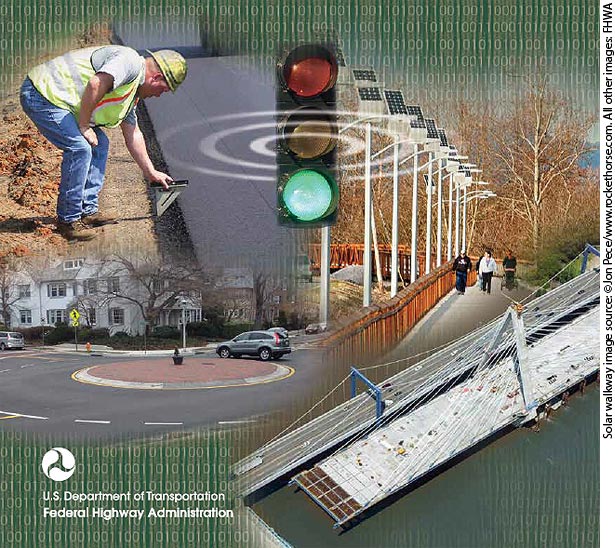U.S. Department of Transportation
Federal Highway Administration
1200 New Jersey Avenue, SE
Washington, DC 20590
202-366-4000
Federal Highway Administration Research and Technology
Coordinating, Developing, and Delivering Highway Transportation Innovations
| REPORT |
| This report is an archived publication and may contain dated technical, contact, and link information |
| Publication Number: FHWA-HRT-14-091 Date: September 2014 |
Publication Number: FHWA-HRT-14-091 Date: September 2014 |
PDF files can be viewed with the Acrobat® Reader®

 The value of research is seen in the development of large and small innovations in materials, designs, policies, operations, and safety on the highway system. Deployment of those innovations enables the highway system to move people and freight efficiently and contributes to the economic success of the United States (U.S.). Today, as in the past, researchers and inventors continue to develop innovations and solutions to transportation challenges.
The value of research is seen in the development of large and small innovations in materials, designs, policies, operations, and safety on the highway system. Deployment of those innovations enables the highway system to move people and freight efficiently and contributes to the economic success of the United States (U.S.). Today, as in the past, researchers and inventors continue to develop innovations and solutions to transportation challenges.
The Federal Highway Administration (FHWA) plays a key role in leading the national transportation research needed to meet the challenges now and in the future. Collaborating with partners around the world, FHWA research conducted at its Turner-Fairbank Highway Research Center (TFHRC) is improving the roads and bridges we travel on every day, saving lives, reducing congestion, and advancing economic growth.
From connected vehicles and vehicle-to-infrastructure communications to road and bridge design, to policy decisions requiring quality transportation data, to human factors and environmentally sustainable roads, this is a time of boundless opportunity. What was once dreamed of as the highway of the future is becoming our reality today. And today we are moving toward solutions that will positively impact the transportation system of tomorrow. In the many innovations described here, learn how FHWA’s R&T initiatives are contributing to advancements in the transportation system.

Michael F. Trentacoste
Associate Administrator for Research, Development, and Technology
 |
| Construction of detour bridges at this location was impossible since these bridges were only a short distance (50 to 70 feet) from either end of the Elk Creek Tunnel in Oregon. With these severe limitations, the only viable alternative available was to remove and replace the bridges using hydraulic sliding system (HSS), an innovative rapid bridge replacement technique. (Image source: FHWA) |